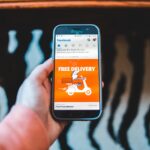Optimizing Facebook Advertising for Better Lead Quality
Facebook is one of the biggest advertising platforms owing to the huge audience size and gives options for advertisers beyond Google and YouTube. However, Facebook advertising poses a bigger challenge as targeting is not based on keywords but on factors like demographics, interests, etc.
While optimizing many international brands across markets, we have observed a high percentage of unqualified leads from Facebook because of poor targeting. If your business is also getting poor quality leads, we outline three steps that can help your business get good quality leads:
1. Building Sources
2. Building Lookalike Audiences
3. Demographics, Interests, and Behavior
Building Sources:
Source implies any business assets which can be used to build audiences. When you want to build audiences, the source can be a website, app, page, and customer list. The sources in Facebook advertising are categorized under: Your Sources (website, CRM, etc.), and Facebook Sources (Facebook Page, Instagram Account, etc.).

Website: One of the most used and easy ways to build an audience is website traffic. If your website traffic is more than 1000 per month, it can be a decent start to create a lookalike audience for improved targeting. The first thing you need to do is to make sure Facebook pixel is set up on your website. If you want to learn more about setting up a Facebook pixel, you can go here.
Go to Create Audience>Custom Audience and select website in the “Your Sources” section.
If your traffic is low, it is best to select all visitors in the “Events” category. However, if your website gets substantial traffic, it is best to segment based on pages which people are visiting. As an example, if your campaign is on health insurance, and if people visited your health insurance web pages, build an audience based on the “visited URL” event.
Also, to avoid people who have already converted on your website, you can build a custom audience either through manual CSV upload or through URL (like a thank-you page) and exclude that audience in your campaigns.
Another underutilized source is your Facebook page. If your Facebook has a good number of followers, you can build an audience based on people who like your page or are engaged or took any action on your page.
Customer List:
Another critical source is your CRM. You can upload the database of your contacts which can include customers or clients, subscribers etc. This is undoubtedly one of the most important audience sources you can build on Facebook.
Lookalike Audiences:
The reason behind building sources is that a lookalike audience can be built on these “sources”. This will help in far better targeting and improving the quality of leads.
To create a lookalike audience, head over to Audiences under All Tools. Click on Create Audience>Lookalike Audience. For your lookalike source, choose any among the source discussed in the last section. The audience location will be the regions or countries where you want to generate leads from. After this step, you have the option of creating multiple audience sizes. This is very important as your most similar audience will be under 1% lookalike. The best way to target is to create multiple audience sizes with 1%-6% lookalike which means 1% will be the most similar audience whereas 6% will be the least similar audience. The audience is non-overlapping, so you don’t have to exclude the audience in the campaign settings.
Demographics, Interests, and Behavior
When you have built sources, and lookalike audiences based on your sources, you can be assured that your targeting is accurate. However, there are ways to refine targeting even further which will not only help in better leads but also decrease cost per lead.
– When your audience size is broad: You can refine targeting further by demographics, interests, or behavior. The demographics data can be analyzed by looking at Facebook custom reports. For instance, you can view age demographics to see if any particular age group segment is not bringing leads and then change campaign settings to exclude that particular segment. You can also add interest-based targeting. For example, for a real estate brand, choosing to target Interests>Business and Industry>Property can yield good results as there is intent shown by the audience in property pages.
– When your audience size is too narrow/niche: If your audience size is low, you can turn on detailed targeting expansion which will look for people beyond selection to get you more leads.
